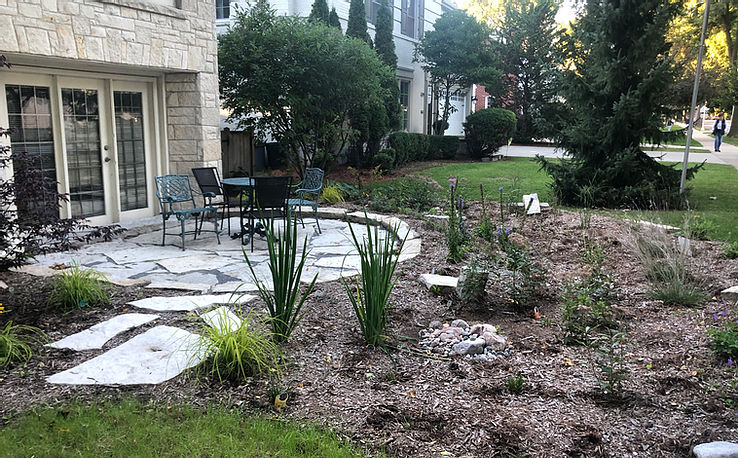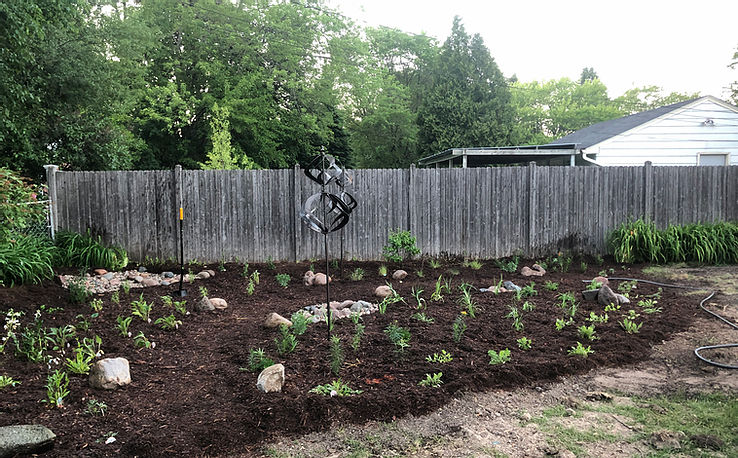Rain Gardens
Rain gardens are planting beds engineered to collect rain water, slowly infiltrating it into our ground water system. Rainwater is diverted away from the home and problem areas of the property through a variety of ways, most commonly by specific grading and underground.
What is a Rain Garden?
These garden beds are usually slightly depressed with the soil loosened 12″-18″+ deep. With our heavy clay soils in SE Wisconsin, at least a partial soil replacement is almost always necessary. An engineered soil mix of sand and compost replaces that non-porous clay soil to help with infiltration.
Native plants are the key component to the infiltration of rain gardens. Their deep roots retain and pull the water deep into the ground. This helps filter out pollutants and sequester carbon. Not only do they provide year round beauty, native plants also provide valuable habitat for important wildlife like birds, bees, and butterflies.
Why Are Rain Gardens Such an Asset?
Many of our clients’ properties don’t have a rainwater drainage plan which leads to major long term damages and expenses to their properties and their foundations.
If there is rainwater drainage, most of them are designed for rainwater to be pushed off the property as quickly as possible. Doing this leads to pollution and flooding. Instead we should be trying to keep the water where it falls as much as possible.
A rain garden can do a lot more than solve drainage problems on your property. Because the water isn’t rushing across the turf grass where we spray lots of chemicals to keep a green lawn, it’s brought into a planting bed that can absorb and filter those pollutants out. Consequently, our lakes and streams stay healthier and cleaner.
By keeping the water on the property longer and diverting it from the streets and our sewers, we’re slowing down the amount of water that will be filling that stormwater system. Therefore, slowing down the likelihood of a flood.
While an individual rain garden may seem like a small thing, collectively they produce substantial neighborhood and community environmental benefits.
Rain Barrels
Who wouldn’t want to utilize FREE way to water your vegetables and landscape plants? Rain Barrels are another useful way to harvest rainwater. They also keep excess water out of the storm sewers and in turn help reduce pollution.
Rain barrels are usually installed next to our downspouts with a diverter. They come in all shapes and sizes. Let us know how we can best utilize this asset into your rainwater management plan.




